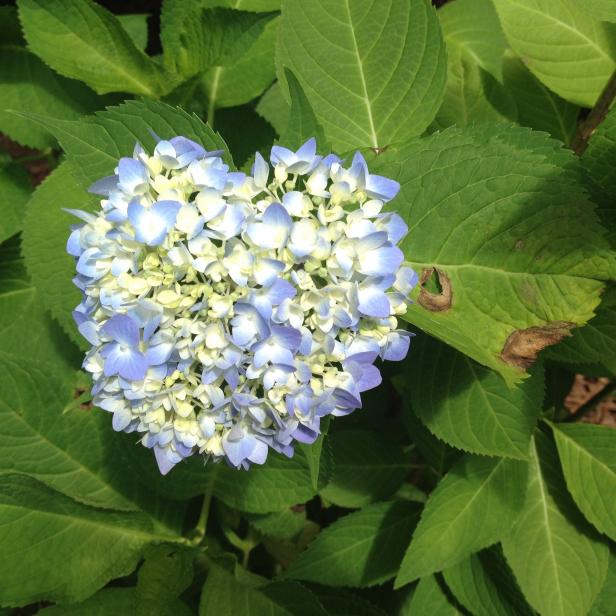Hydrangea Leaves Turning Yellow Things To Know Before You Buy
Wiki Article
Indicators on Hydrangea Leaves Turning Yellow You Need To Know
Table of ContentsThe 6-Minute Rule for Hydrangea Leaves Turning YellowThe Main Principles Of Hydrangea Leaves Turning Yellow Hydrangea Leaves Turning Yellow for DummiesSome Known Questions About Hydrangea Leaves Turning Yellow.The 10-Minute Rule for Hydrangea Leaves Turning YellowGetting My Hydrangea Leaves Turning Yellow To Work
One possibility is that the plant is not obtaining sufficient sunlight. Throughout the cold weather, the days are shorter, and the sun is not as extreme, so ensure to position your Hydrangea in an area where it will certainly access the very least 6 hours of sunshine every day. An additional reason for Hydrangea yellow leaves in winter can be as well much water.The fallen leaves could be turning yellow due to temperature level tension. Hydrangeas like cooler temperature levels, so if the plant is in an area that gets too warm or also cool, the leaves will turn yellow. If you assume temperature tension may be the issue, try moving your Hydrangea to a various location or shielding it from the aspects with a cloth cover.

See This Report on Hydrangea Leaves Turning Yellow
In the spring when the mercury stays reasonably low, they'll do fine. When things warm up over the summer however, time spent in the early mid-day rays can trigger unimaginable damage.: Expand your hydrangeas in an area where they'll get sunshine in the early mornings or evenings, yet not throughout the peak hours.Wilting is triggered by absence of dampness, implying there are a couple of excellent tricks to use to avoid this from happening - Hydrangea Leaves Turning Yellow. Give your hydrangeas a healthy and balanced glug of water every couple of days when the temperature levels are climbing up high, and deal with the dirt to far better preserve dampness. After watering, a dab of mulch around the base of each plant must aid with this by keeping wetness in the dirt

The Best Guide To Hydrangea Leaves Turning Yellow
As a general regulation of thumb, we advise removing fallen leaves when they are 50% brownish or greater. While browning created by any reason can't be reversed, taking the restorative action described above will motivate the plant to grow new leaves so the damaged fallen leaves either fall off naturally or can be removed by the gardener.Hydrangeas must be watered only when the leading couple of inches of soil are dry, and need to be provided a complete soaking each time. Underwatered hydrangeas are most likely to have yellow, wilting, and drooping fallen leaves.
The way you fix hydrangea leaves transforming yellow depends upon the key concern causing the yellow leaves. This can be difficult to determine, yet once you do you will be able to adjust your plant treatment accordingly to deal with the trouble. Hydrangea Leaves Turning Yellow. As pointed out before, an usual issue with hydrangeas is nutrient deficiencies
The Hydrangea Leaves Turning Yellow Statements
Throughout the top expanding period, you must water at a price of concerning 1 inch per week. If you are stressed over not properly watering your hydrangeas, there are a number of points you can do. Including mulch to the base of the plants over the origin zone aid to regulate the temperature around the bush and maintain water in the soil.You can purchase and set up basic watering worlds. Sprinkling worlds hold water in them and gradually release this water into the soil as the ground becomes dry. Just load the world with water, stick the spout right into the dirt within the origin area near the base of the plant, and leave it in place until all the water is gone.
If it is too view website severe, some plants will never ever recuperate from transplant shock and will certainly remain to decrease up until they die. Reduce transplant shock by including as lots of roots as possible when digging up your plant try this website to relocate it. Make certain to supply more water than typical in the weeks complying with growing to assist your plant recuperate and grow new roots.
Not known Facts About Hydrangea Leaves Turning Yellow

To avoid spreading fungal conditions, be certain to thouroughly tidy and disinfect any pruning devices before and after use. You can try to flush the roots with water to remove excess fertlizer.
Your hydrangea plant prefers well-drained, moist soil. If the pot has poor water drainage, or your dirt is flooded, the fallen leaves will certainly begin to turn yellow.
If you don't sprinkle your hydrangea plant for even more than a week, the fallen leaves will certainly start turning yellow. Fungal conditions that strike the plants often tend to reveal join the roots and the fallen leaves of the plant. Among these illness is root rot, which makes it difficult for the plant to feed effectively.
Some Known Incorrect Statements About Hydrangea Leaves Turning Yellow
Fallen leave spot is one more fungal condition that can target hydrangea. It results in the fallen leaves turning yellow and the look of brown and purple official site spots on the leaves.Report this wiki page